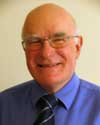Presentations
Modern Methods for Microwave Filter Synthesis
Up until the early 1970s, nearly all filter synthesis techniques were based upon the extraction of electrical elements (lumped capacitors and inductors, transmission line lengths) from the polynomials that represented the filter’s electrical performance in mathematical terms. This was perfectly adequate for the technologies and applications that were current at the time, and many important contributions were made to the art of advanced filter transfer and reflection polynomial generation, and then their conversion to electrical component values corresponding to the filter technologies that were then available.
In the early 1970s a revolution in telecommunication systems and available technology was taking place. The first satellite telecommunication systems were in operation and demand for their services was growing enormously. The crowding of the available spectrum meant that the specifications on channel filters in terms of in-band linearity (group delay, insertion loss) and out-of-band selectivity (high close-to-band rejection, and for transmit filters lowest possible insertion loss), were getting ever more demanding.
During this period some important advances were made in the art of filter network synthesis. Central to these was the coupling matrix representation of the microwave filter electrical network. The coupling matrix synthesis method offers some important advantages over the classical synthesis methods – one of these is the one-to-one correspondence between the elements of the coupling matrix and the individual physical components of the filter. Another advantage is the ability to reconfigure the coupling matrix through similarity transforms to arrive at a different coupling topology, corresponding to the available coupling elements of the particular microwave structure that has been selected for the application. The coupling matrix will naturally accommodate asymmetric characteristics, and those incorporating special features such as transmission zeros or group delay equalization, or both. All these features are critical for meeting the stringent specifications of today’s microwave systems.
The lecture for the DML tour will focus on the coupling matrix and the many opportunities for advanced microwave filter design that it opens up. Although there are a number of commercial software tools available for the design of such filters, they are often applied without proper understanding of the fundamentals involved or awareness of alternative designs better suited to the specifications in hand, resulting in a device which is sub-optimal in terms of electrical and mechanical performance. The younger upcoming designers tend to rely on these packages, largely due to a scarcity of reference works and journal articles on the subject of modern filter network synthesis methods.
The DML lecture will aim at bringing these state-of-the-art filter synthesis methods to microwave equipment designers, presenting the possibilities that have now become available for meeting the very stringent specifications that are demanded by modern telecommunication, broadcast, radar and scientific/earth observation satellite systems. The lectures will be presented in a style that minimizes mathematics and jargon as far as possible in order to appeal to multi-discipline audiences.
